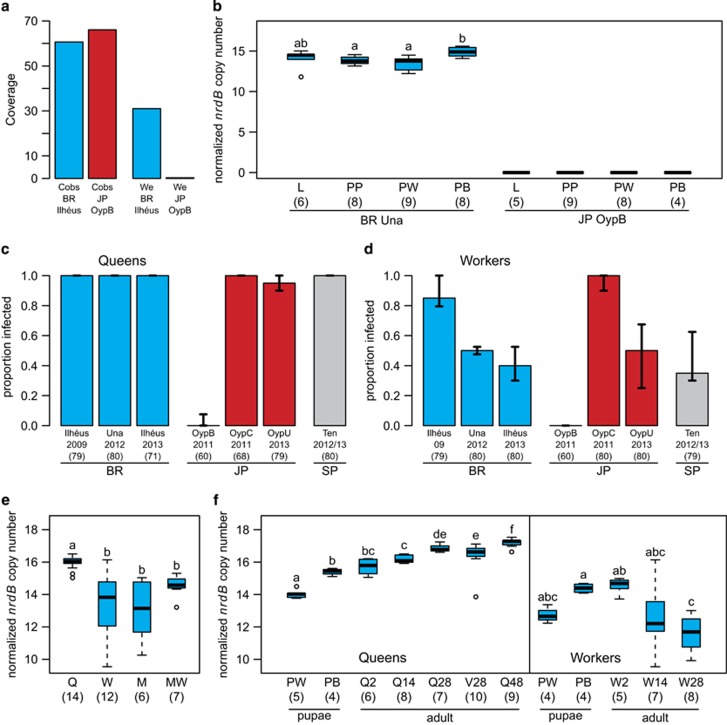Figure 3.
Intraspecific and temporal dynamics of Westeberhardia infection. (a) In genomic coverage data for pooled haploid males mapped against the Westeberhardia reference, Westeberhardia reads (We) were exclusively present in the Brazil, Ilhéus (2009) sample (BR, blue) and no reads could be detected in the OypB, Japan (JP, red) sample, whereas coverage of C. obscurior reads (Cobs) mapped against the C. obscurior reference is similar. (b) Real time-quantitative PCRs on DNA level for the nrdB gene confirm the absence of Westeberhardia in larvae (L), prepupae (PP) and female (queen and worker) pupae (PW=pupa white, PB=pupa brown) of the JP OypB population, whereas all those developmental stages are infected in the BR Una (2012) (letters indicate significances for within-population comparisons for BR). (c and d) Prevalence of Westeberhardia in queens (c) and workers (d) across different populations of C. obscurior from BR (blue), JP (red) and Tenerife, SP (gray), as revealed by qPCR (c) and diagnostic PCR (d), of the nrdB gene. For each lineage, 6–8 colonies and per colony 9–10 young workers and 6–10 queens were tested. Bars represent medians and whiskers denote quartiles. Note that while Westeberhardia infection status of workers varies between and within populations of C. obscurior, it is almost fixed in queens across all lineages except OypB. (e and f) Morph (e) and age (f) dependency of relative amounts of Westeberhardia in C. obscurior individuals from BR (Una, 2012) determined by real-time quantitative PCR. Normalized nrdB copy numbers are elevated in queens compared with all other morphs (Q=queens; W=workers; M=males winged; MW=males wingless) (e), increase with age in queens, but decrease with age in workers (numbers after Q/W show age in days, V=virgin queens, letters indicate significant differences for within-caste comparisons) (f). Sample sizes are given within parentheses.

